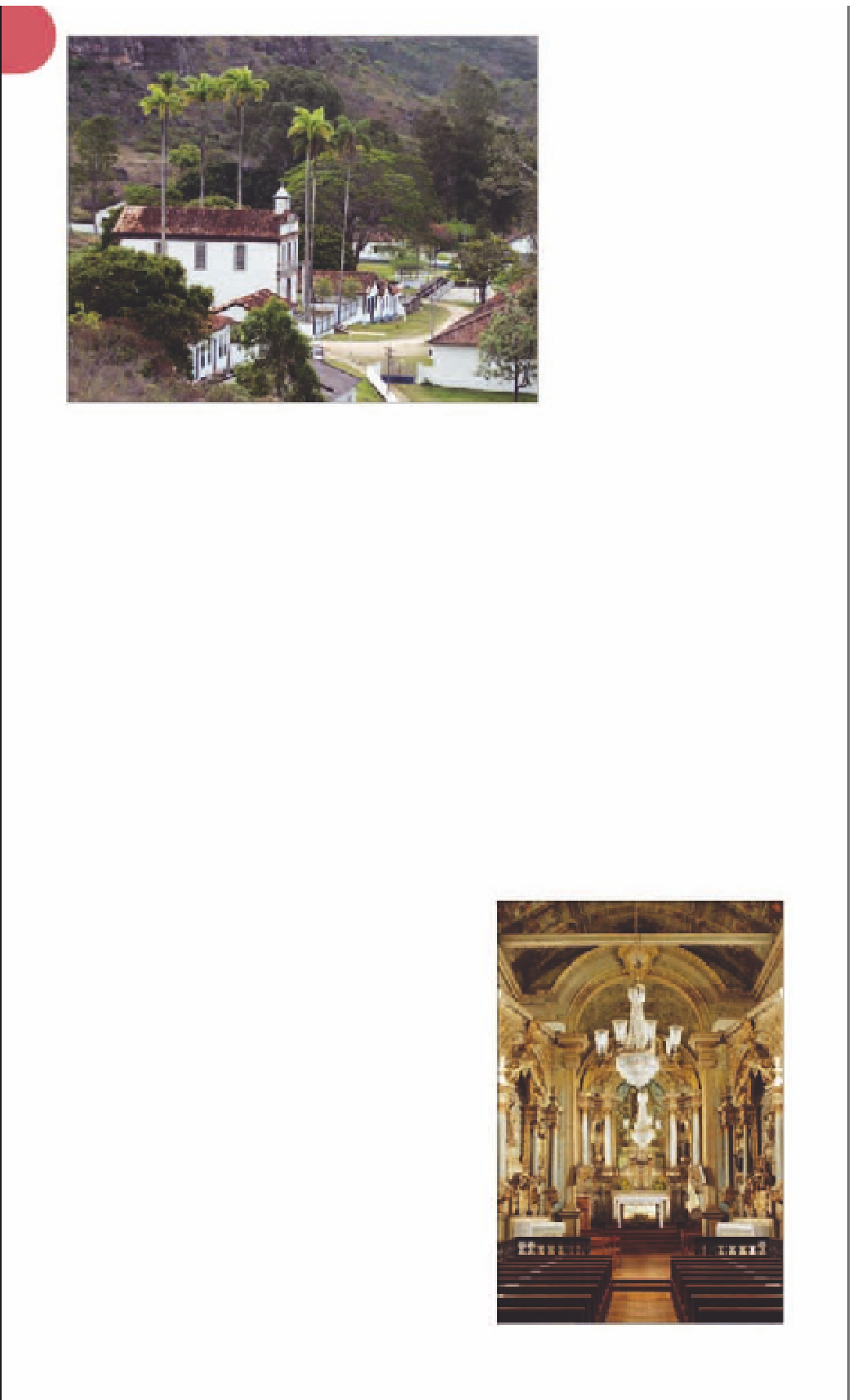Travel Reference
In-Depth Information
owner than it is for its small
collection of period furniture.
During the 18th century,
Francisca (Chica) da Silva was
a mulatta slave who became
one of the few black people
to become accepted by high
colonial society through sheer
force of personality.
Environs
A string of stunning natural
locations lie within easy reach
of Diamantina, the most
impressive of which is
Biribiri
,
located 7 miles (12 km) north
of town. A historical village,
Biribiri is home to many
fazendas
and is surrounded
by waterfalls and mountains.
Next to Biribiri is a winding
black water river and the
Parque Rio Preto, a good
location for bird-watching.
E
Old
fazenda
in the beautiful village of Biribiri near Diamantina
Diamantina
1
*
48,000.
@
Largo Dom João 134,
(038) 3531 1471.
n
Praça Juscelino
Kubitschek 25, (038) 3531 8060.
www
.diamantina.com.br
Casa da Gloria, consisting of
two houses on opposite sides
connected by an enclosed,
brilliant blue, second-storey
passageway. The building
is not open to the public.
There are several churches
in Diamantina. The oldest is
the
Nossa Senhora do Rosário
,
in the square of the same
name, a short distance to
the northeast of the Praça
Guerra. It was built and used
by the enslaved black com-
munity and the city's poor.
Next to it is an original 18th-
century fountain whose
waterspouts are bas-reliefs
of African heads.
A block south is the
spectacular
Nossa Senhora
do Carmo
. Built between
1760 and 1784, it was the
town's richest church
and attended by the
elite white community.
It is remarkable chiefly
for the interior paint-
ings by José Soares de
Araujo, from Braga,
Portugal. Araujo's
works lie in many of
the town's churches
but those here are his
finest. The ceiling paint-
ings are very striking.
Near the back of the
church is a portrait of
the Prophet Elijah
ascending to heaven
in a chariot of fire.
The
Casa de Chica
da Silva
, a smart town
house one block south
of the Nossa Senhora
do Carmo, is famous
far more for its former
Nave, Igreja de Nossa Senhora do Carmo
Casa de Chica da Silva
Praça Lobo Mesquita 266.
Tel
(038)
3531 2491.
noon-5:30pm Tue-
Sat, 9am-noon Sun.
E
Museu Casa do Diamante
Rua Direita 14.
Tel
(038) 3531
1382.
#
Nestled in rugged hills and
shrouded with
cerrado
forest,
Diamantina is the prettiest
and best preserved of all the
colonial cities in the state, and
also a UNESCO World
Heritage Site. Diamonds were
discovered here in 1728,
when the city was a small
settlement called Arraial do
Tijuco. Within a few decades
the mud huts and encamp-
ments transformed into one of
the wealthiest towns in Brazil.
The city is tiny and most
of its historic buildings and
churches lie within easy
walking distance of the main
square, Praça Guerra. This is
an obvious point of orientation
as it is dominated by the twin
towers of the largest building
in the city - the Catedral
Metropolitana de Santo
Antônio, built in the 1930s. Just
south of this in the adjacent
Praça Juscelino Kubitschek
is a small
Museu Casa do
Diamante
, which houses
a handful of the stones,
together with iron collars
once fitted onto slaves.
South again is the
Museu
de Juscelino Kubitschek
, the
modest former home of the
Brazilian president, Juscelino
Kubitschek (1902-76),
who
built Brasília
(see pp302-303)
.
Two blocks west is the city's
most beautiful landmark, the
noon-5:30pm Tue-Sat,
9am-noon Sun.
#
&
E
Museu de Juscelino
Kubitschek
Rua São Francisco 241.
Tel
(038)
3531 3607.
8am-noon & 2-6pm
Tue-Sat, 9am-noon Sun.
#
&
R
Nossa Senhora do Carmo
Rua do Carmo.
#
8am-noon &
2-6pm Tue-Sun, 8am-noon Sun.
R
Nossa Senhora do Rosário
Largo do Rosário.
#
8am-noon &
2-5:30pm Tue-Sat, 8am-noon Sun.
For hotels and restaurants in this region see pp372-3 and pp398-9



































